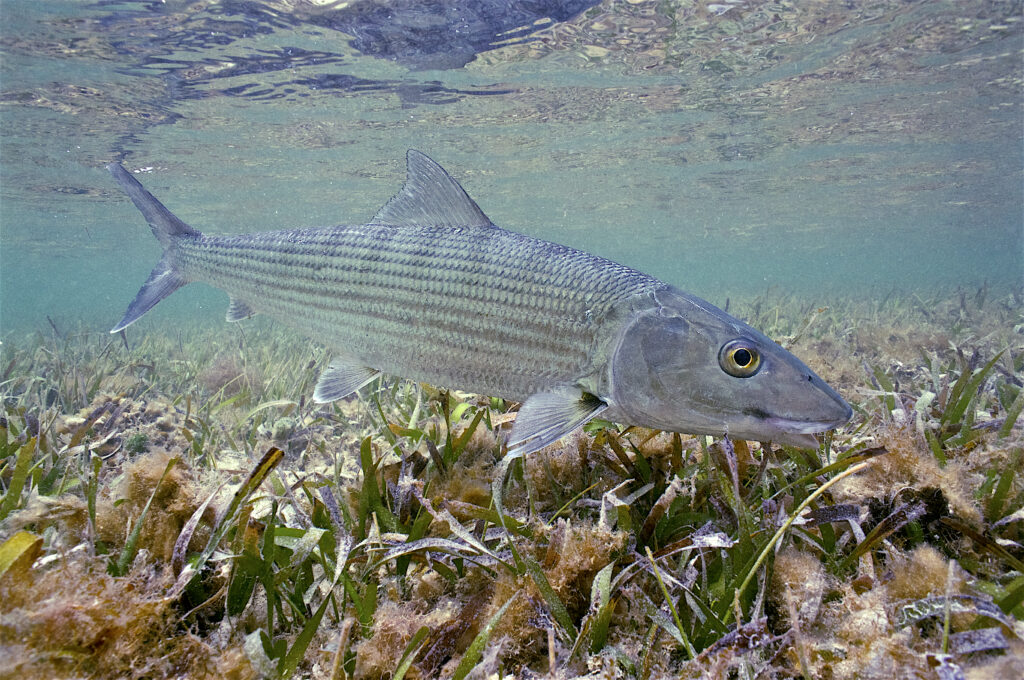Your stories reveal a 60-year history of bonefish in South Florida
Bonefishing is more than just a sport—it is a storybook of memories, traditions, healthy competition, and importantly, change. But what happens when the only data we have to understand these changes are just the stories themselves? How do we track the health of the fishery over time and inform management when there is no formal stock assessment?
Collaborating with scientists from the NGO Project Seagrass and Florida International University, Bonefish & Tarpon Trust set out to answer these questions by tapping into something far less conventional than traditional fisheries surveys: the memories of guides’ and anglers’ best-ever fishing days.
Time on the water provides important information
The lack of the scientific data needed for stock assessments and insufficient management amplify the global collapse of fish populations. Lack of data on things like population size make managing fisheries difficult. For recreational fisheries, the lack of these data has often left scientists and policymakers in the dark, and with no formal records, understanding long-term trends in the abundance and size of species like bonefish has remained elusive, until now. Here is where your memories become powerful. By asking two simple questions—how many fish you saw (or “had shots at”) and how big the biggest fish was—we have created a unique, data-driven window into the past 60 years.
While you might have a good understanding of the pulse of the fishery from your own experience, it’s the combined experience of everyone that’s helpful in addressing fluctuations, and devising management that is influenced by the knowledge of guides and anglers.
For the Florida Keys, we combined the memories you all provided to show that bonefish numbers climbed steadily from the 1960s, peaking in the 1980s. However, then came a sharp decline that lasted through 2010. Since then, there’s been a tentative bounce back—encouraging, but not yet reaching the heyday of previous decades. The exact timing of this bounce back and its strength also vary across regions.
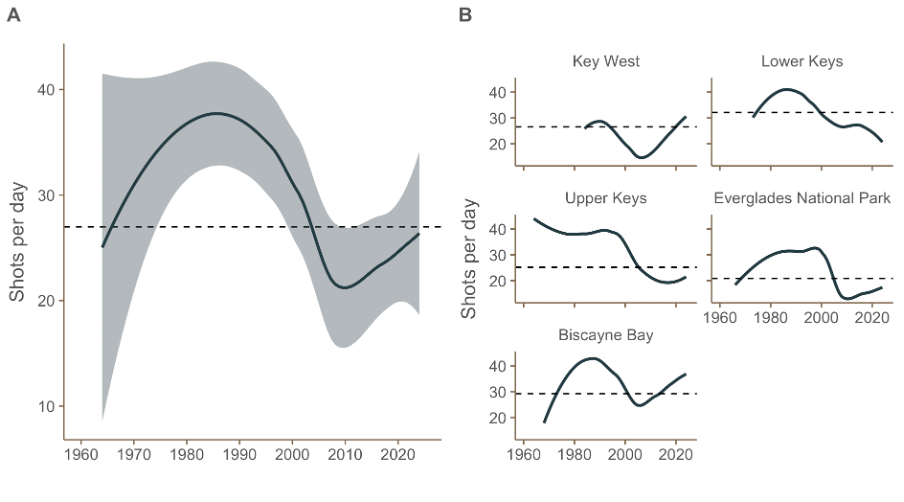
The figure above shows the trend since the mid 1960s to 2024 for shots at bonefish combining everyone’s survey response for their best shots over the years. On the left is the trend for all regions combined, while on the right is the trend broken down by region. The dotted line is the average across all years.
However, what is even more striking is the shift in size. In the 1990s, landing a 12-pounder was the dream. Today, most of you reported much smaller fish, and while the number of bonefish seems to be rebounding, their size is not yet. The once-common “trophy” fish have not re-established in the recovering population. Only Biscayne Bay shows signs of sustaining larger individuals. This provides a foundation for keeping an eye on fish size over the coming years to help track the health of the Keys bonefish population.
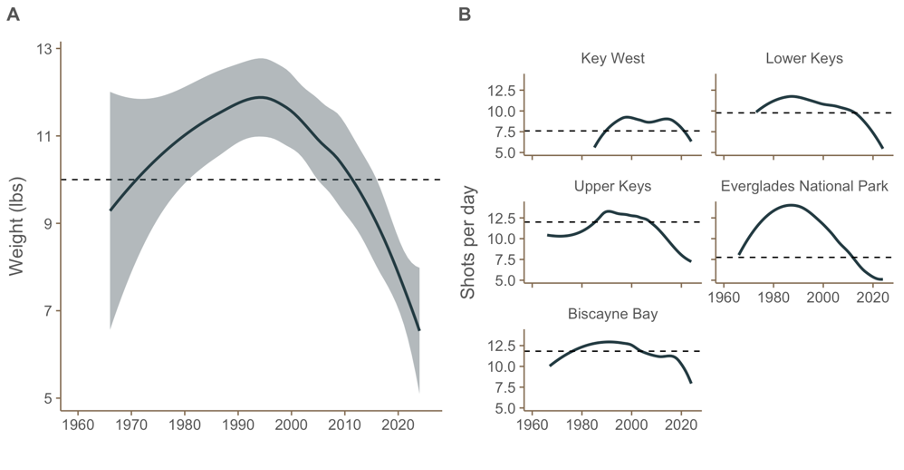
The figure above shows the trend since the mid 1960s to 2024 for bonefish size combining everyone’s survey response for their largest bonefish over the years. On the left is the trend for all regions combined, while on the right is the trend broken down by region. The dotted line is the average across all years.
It is unlikely that any single event caused this downturn. Instead, it is more likely that a perfect storm of challenges, including seagrass degradation, algal blooms, climate shocks like hurricanes and cold snaps, changes in ocean currents that transport larvae, and perhaps even predation, have all contributed to some extent.
In the absence of traditional fisheries data, the information from the fishing community that revealed this 60-year trend shows that memories matter. And for fisheries like bonefish, where formal monitoring hasn’t occurred and isn’t on the horizon, and management is often reactionary, this type of local knowledge is essential to sustainable stewardship.
In the end, these memories and stories that you all hold do more than entertain and captivate—they may just help save the fish.
How you can help
What’s you take on these trends? Have we captured your knowledge? We’d love to receive your feedback on these and direct you to a short survey where you can rate the accuracy of these trends. Take Feedback Survey
If you’ve not taken the bonefish survey, you can do so here, that way we can add your numbers to the trend: Take Bonefish Survey
Thank you so much for participating in this effort. As always, the guide and angler community is our best source of information.
If you have any questions or wish to chat further, you can reach the team working on this at: fishscience@fiu.edu
